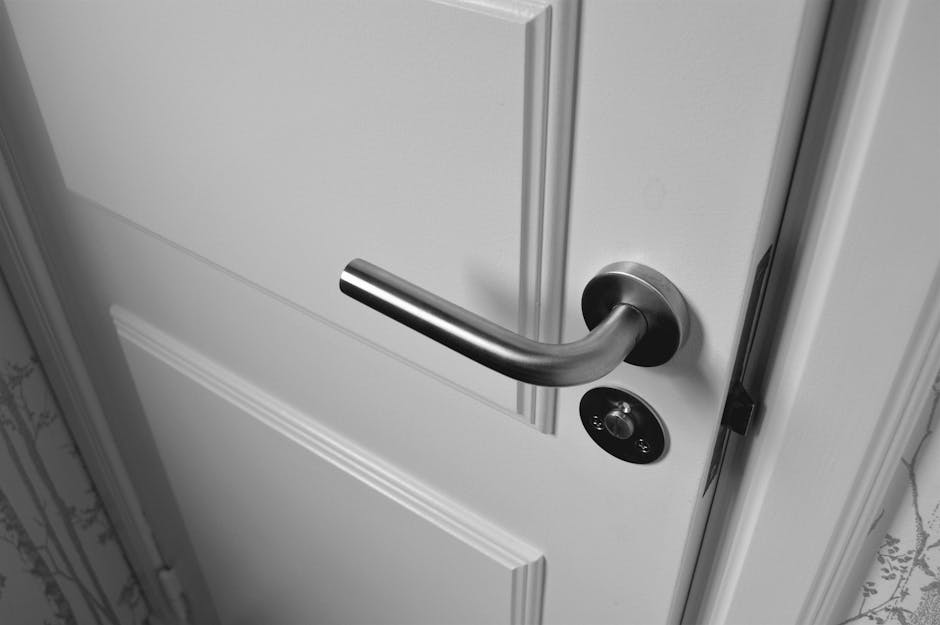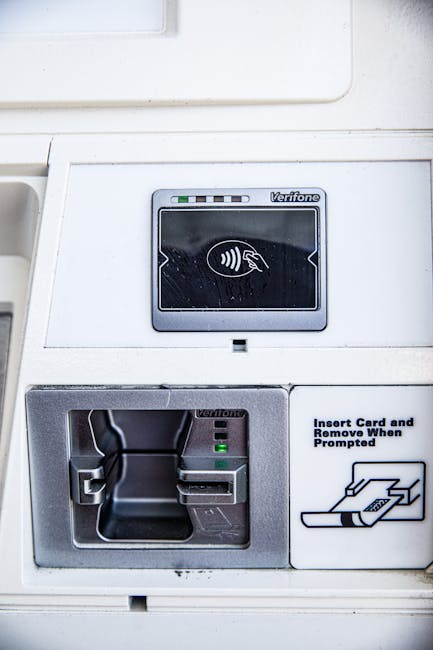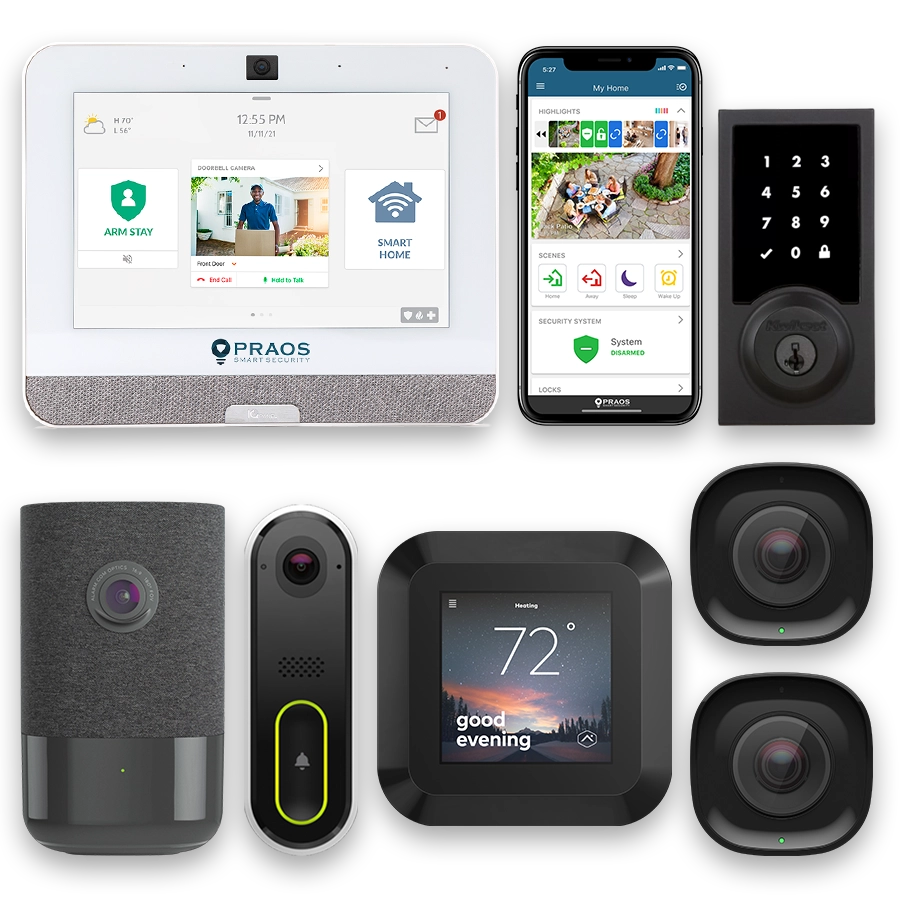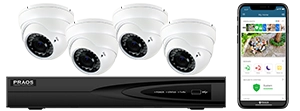- Introduction to Smart Locks and Security Automation
- The Evolution of Home Security Technologies
- Key Features and Benefits of Smart Locks
- Integrating Smart Locks into Existing Security Systems
- Enhancing User Experience with Security Automation
- Real-World Applications and Success Stories
- Addressing Security Concerns and Vulnerabilities
- The Future of Smart Home Security and Automation
Introduction to Smart Locks and Security Automation
Smart locks represent a pivotal advancement in home security technology, offering increased convenience and enhanced safety. These devices allow homeowners to control access to their homes using digital keys instead of traditional mechanical ones. The implementation of advanced encryption and authentication methods ensures secure and reliable operation.
Security automation integrates various electronic devices and systems, including smart locks, to improve overall home security. By leveraging the power of connectivity and automation, these systems provide real-time monitoring and control, making it easier for homeowners to manage the safety of their property remotely. This combination of smart locks and security automation marks a significant evolution in how security is approached in the digital age.
The market for smart home devices, including smart locks, has experienced substantial growth. According to Statista, the global smart home market is expected to reach $53.45 billion by 2022. The increasing adoption of smart locks is driven by their potential to enhance security, simplify home management, and offer a higher level of convenience.
Smart locks come equipped with various authentication methods such as keypad entry, biometric verification (e.g., fingerprint recognition), and remote access through smartphone applications. These features allow homeowners to lock and unlock doors without physical keys, providing flexible and secure access control. Moreover, the ability to generate temporary or permanent digital keys adds an extra layer of convenience, allowing homeowners to grant access to guests or service personnel.
Integrating smart locks with security automation systems can significantly enhance home security. Automated alerts, real-time access logs, and remote control capabilities enable homeowners to stay informed and in control of their property at all times. For example, if a door is left unlocked, the system can send a notification to the homeowner’s smartphone, prompting immediate action.
As smart locks become more sophisticated, the importance of ensuring their security increases. Manufacturers prioritize robust encryption protocols and regular software updates to safeguard against potential vulnerabilities. Consumer Reports emphasizes the necessity of choosing reputable brands that adhere to industry standards and offer strong customer support.
In summary, the introduction of smart locks and security automation represents a significant shift in home security practices. By leveraging digital technologies, these systems offer enhanced control, greater convenience, and improved security for modern homeowners. As the market grows and technology advances, the integration of smart locks with comprehensive security automation systems is likely to become a standard feature in many homes.
The Evolution of Home Security Technologies
The advancement of home security technologies can be traced back to rudimentary mechanisms such as bolts and physical locks utilized centuries ago, evolving through various phases influenced by technological progress. Today, the field has significantly transformed thanks to the advent of digital and automated security solutions.
Early security systems primarily relied on mechanical locks and basic alarm systems. In the 20th century, these simple devices were augmented by electronic systems such as burglar alarms and CCTV cameras. These innovations marked the first major leap towards modern home security, providing homeowners with greater control and monitoring capabilities.
With the rise of the internet and wireless communication in the late 20th and early 21st centuries, the concept of home security began to morph into more sophisticated, interconnected systems. Internet Protocol (IP) cameras allowed for real-time remote monitoring, breaking the geographical constraints that limited traditional surveillance systems.
Further evolution was marked by the integration of smart technology. Devices equipped with sensors, connectivity features, and automation capabilities began to emerge, paving the way for the current era of smart homes. In these modern systems, smart locks stand out due to their blend of traditional lock mechanisms and advanced digital functionalities.
Smart locks primarily operate through wireless protocols such as Wi-Fi, Bluetooth, or Z-Wave, allowing them to be controlled remotely via smartphones, tablets, or voice assistants. This enhancement provided a significant upgrade from traditional locks, offering not just convenience but also robust security features such as real-time alerts and event logs.
In parallel, security automation systems have evolved to encompass a broad suite of functionalities. Combining surveillance, access control, environmental monitoring, and even integration with other smart home devices, these systems provide comprehensive oversight and management capabilities. They utilize technologies like artificial intelligence and machine learning to predict and respond to security breaches, enhancing both proactive and reactive measures.
The convergence of smart locks and security automation represents the pinnacle of home security evolution, embodying both the physical robustness of traditional mechanics and the ingenuity of modern digital technologies. This amalgamation not only enables enhanced security but also brings an unprecedented level of convenience and user accountability.
Key Features and Benefits of Smart Locks
Smart locks offer several key features that distinguish them from traditional locking mechanisms. One primary benefit is their ability to be controlled remotely via smartphones, tablets, or other internet-connected devices. This remote functionality allows users to lock and unlock their doors from virtually anywhere, providing enhanced convenience and peace of mind.
One of the standout features of smart locks is the ability to provide temporary access to visitors. Homeowners can generate temporary digital keys for guests, contractors, or service personnel. These keys can be set to expire after a certain period, ensuring that access is granted only when necessary. This feature is especially useful for Airbnb hosts and property managers who need to provide access without being physically present.
Integration with other smart home devices is another significant advantage of smart locks. Many smart locks are compatible with voice assistants like Amazon Alexa, Google Assistant, and Apple HomeKit. This allows users to control their locks via voice commands and integrate them seamlessly into their existing smart home ecosystems. For example, users can create automation routines that lock the doors when the security system is armed or when the lights are turned off.
Smart locks also offer advanced security features that enhance home safety. For instance, many models come equipped with encrypted communication protocols to prevent unauthorized access. Some smart locks include a built-in alarm that activates if tampering is detected, providing an additional layer of security. Certain models also offer geofencing capabilities, which can automatically lock or unlock doors based on the user’s proximity to their home.
Another notable benefit is the detailed access logs provided by smart locks. These logs allow users to track who has entered and exited their home and at what times. This feature is particularly valuable for monitoring activities and ensuring that no unauthorized access occurs. Additionally, some smart locks can send real-time alerts to the homeowner’s smartphone if an unusual event, such as a forced entry attempt, is detected.
Installation and maintenance of smart locks are generally straightforward. Many models are designed to be compatible with existing deadbolts, reducing the need for extensive modifications. Battery-powered smart locks often include indicators that notify users when the battery is low, ensuring that the lock remains operational at all times.
In summary, the key features and benefits of smart locks include remote control, temporary digital keys, integration with smart home systems, advanced security features, detailed access logs, and ease of installation and maintenance. These attributes make smart locks a valuable addition to any modern security system, enhancing both convenience and home safety.
Integrating Smart Locks into Existing Security Systems
Integrating smart locks into existing security systems provides a seamless way to enhance home safety. While standalone smart locks offer considerable benefits, their true potential is unlocked when integrated with broader security automation systems such as security cameras, alarms, and motion detectors.
One of the primary advantages of integrating smart locks with security automation lies in centralized control. Homeowners can manage all security devices from a single platform, typically through an application on their smartphone or through a unified home automation system. This centralization imparts not only convenience but also a more holistic and coordinated approach to home security.
An example of this integration is when a smart lock is connected to a home security camera. Should unauthorized access attempts to occur, the camera can be programmed to record video automatically. Moreover, an immediate alert can be sent to the homeowner along with a snapshot or video feed, enabling real-time monitoring and quicker response efforts.
Merging smart locks with security alarm systems can further elevate the safety measures. For instance, when the smart lock detects a forced entry, it can trigger the alarm system, potentially deterring intruders while simultaneously notifying the homeowner and, if subscribed, alerting security services.
The following table outlines some compatibility options for integrating smart locks with various security systems:
| System Component | Compatibility with Smart Locks |
|---|---|
| Security Cameras | Allows video recording and real-time alerts upon unauthorized access attempts. |
| Alarm Systems | Triggers alarms in case of forced entry or tampering, notifying homeowners and security services. |
| Motion Sensors | Enhances detection capabilities by triggering locks and alerts upon unusual motion. |
| Smart Lighting | Programs lights to turn on upon entry, enhancing both convenience and security. |
Another key benefit is remote accessibility. Integrating smart locks with broader security systems allows homeowners to control and monitor their locks from virtually anywhere. This is particularly advantageous for verifying the security of the home during travel or when renting properties to tenants. Advanced systems even offer biometric and AI-based features to analyze and learn from usage patterns, offering predictive security measures tailored to specific needs.
Lastly, modern security automation platforms often include features that allow integration with emerging home automation technologies, such as voice-activated assistants like Amazon Alexa and Google Assistant. Voice control not only enhances user convenience but also integrates another layer of accessibility without compromising security integrity.
Thus, the integration of smart locks into existing security systems represents a significant stride towards ensuring robust, comprehensive, and convenient home security solutions in the digital age. Effective integration requires selecting compatible devices and potentially professional installation and configuration, but the resultant synergy of multiple security components offers unparalleled peace of mind.
Enhancing User Experience with Security Automation
Security automation, when integrated with smart locks, significantly enhances the user experience by offering a streamlined, convenient, and efficient approach to managing home safety. The combination of these technologies ensures that users do not have to juggle between different systems to ensure their homes are secure. This integration provides a seamless and user-centric approach to home security.
One of the primary ways in which security automation enhances user experience is through remote access and control. With security automation platforms, homeowners can operate their smart locks from anywhere in the world using their smartphones or other connected devices. This ability allows users to lock or unlock doors remotely, grant temporary access to visitors, and receive real-time notifications about the status of their locks.
Moreover, security automation systems often include integration with other smart home devices. For instance, smart locks can be synced with security cameras, alarms, and motion sensors to provide a comprehensive security solution. If an unauthorized entry attempt is detected, the system can automatically trigger an alarm, start recording footage, and notify the homeowner, all while locking other entry points to deter intruders.
Another aspect of enhanced user experience is the implementation of automation routines. These routines can be programmed to perform various actions based on specific triggers or schedules. For example, smart locks can be set to automatically lock the door at a certain time each night or when the homeowner’s smartphone leaves a predefined geo-fenced area. This reduces the need for manual intervention and enhances peace of mind by ensuring that the home is always secure according to the user’s preferences.
Voice control integration, supported by virtual assistants like Amazon Alexa, Google Assistant, and Apple Siri also plays a significant role in improving the user experience. Users can lock or unlock their doors using simple voice commands, adding an extra layer of convenience and accessibility, especially for individuals with limited mobility or those with busy hands.
Security automation platforms generally offer detailed activity logs and audit trails. These logs provide users with valuable insights into access patterns and can help identify any unusual activity. Homeowners can review a history of lock-related events, such as who accessed the home and when, which adds another layer of security by making it easier to spot and address anomalies quickly.
In conclusion, integrating smart locks with security automation systems greatly enhances the user experience by providing remote access, seamless integration with other smart devices, automation routines, voice control capabilities, and detailed activity logs. These features work together to create a more secure, convenient, and user-friendly home environment.
Real-World Applications and Success Stories
Real-World Applications and Success Stories
Integrating smart locks with security automation has proven to be a transformative solution in various residential settings. Real-world applications demonstrate how these technologies offer enhanced convenience, security, and control for homeowners. Examining several examples can provide a clearer understanding of their practical benefits and effectiveness.
Residential Communities
Smart locks have been effectively implemented in residential communities, providing residents with a seamless way to manage access to their homes. Installation of smart locks allows for keyless entry, reducing the risk of lost or stolen keys. With the integration of security automation systems, residents can remotely monitor and control their locks through mobile applications, ensuring their homes are secure even when they are away.
- Property managers can grant access to contractors or maintenance personnel for specific time frames, improving security oversight.
- Residents receive real-time notifications when someone enters their home, providing added peace of mind.
Vacation Rentals
Vacation rental owners have adopted smart lock technology to streamline the check-in and check-out process for guests. By using security automation, owners can provide temporary access codes to guests, eliminating the need for physical keys and allowing for flexible check-in times. This application significantly enhances guest experience and reduces operational complexities for owners.
- Temporary access codes can be set to expire at the end of the rental period, providing security for both current and future guests.
- Owners can monitor lock activity and be alerted to any unauthorized attempts to access the property.
Urban Apartments
In urban apartment complexes, smart locks and security automation systems have allowed for improved access management. Residents benefit from the ability to unlock their doors using their smartphones or biometric identifiers, such as fingerprints. This integration helps in managing access to shared facilities like gyms, pools, and storage units more efficiently.
- Building managers can control access permissions for common areas, ensuring only authorized residents can enter.
- Activity logs from smart locks can help in monitoring and addressing potential security issues within the complex.
Data to Support Integration Success
Research and market analysis provide strong evidence supporting the successful integration of smart locks with security automation in real-world applications. According to a report by MarketsandMarkets, the smart lock market is projected to grow from USD 1.1 billion in 2021 to USD 2.9 billion by 2026, demonstrating increased adoption and confidence in these technologies.
- Studies show that homes with integrated smart locks and automation systems experience fewer break-ins, thanks to advanced security features such as real-time alerts and remote access management.
- A survey by Statista revealed that over 60% of smart lock users report higher satisfaction with their home security systems compared to traditional locks.
Conclusion
The integration of smart locks with security automation has shown significant positive impacts across various real-world applications. From residential communities to vacation rentals and urban apartments, these technologies provide enhanced security, convenience, and control for homeowners and property managers alike. As adoption continues to grow, the benefits of these integrated systems are expected to become even more pronounced.
Addressing Security Concerns and Vulnerabilities
When integrating smart locks with security automation, it is imperative to address security concerns and vulnerabilities to ensure the robustness of home safety systems. These concerns primarily revolve around issues such as hacking, encryption standards, physical tampering, and privacy.
Hacking Risks: One of the most prominent concerns with smart locks is their susceptibility to hacking. Cybersecurity threats can exploit vulnerabilities in the software or network protocols used by these devices. Ensuring comprehensive and up-to-date security measures can mitigate such risks. For instance, using robust encryption standards such as AES (Advanced Encryption Standard) can make unauthorized access significantly more difficult.
Encryption Standards: Encryption is a critical aspect of maintaining the security of smart locks. High-level encryption methods like AES-256 are widely adopted due to their resistance to brute-force attacks. Utilizing such encryption not only protects the communication between the smart lock and the central security system but also safeguards the stored data.
Physical Tampering: Despite the digital advancements, physical tampering remains a concern. Smart locks need to be designed to be resistant to common physical break-in techniques. Reinforced materials and tamper detection mechanisms can significantly reduce the risk of physical breaches.
Privacy Concerns: The integration of smart locks with security automation raises potential privacy issues. Data privacy regulations, such as GDPR (General Data Protection Regulation) in Europe, mandate stringent guidelines for the handling of personal data. Compliance with these regulations ensures that user data is protected against misuse and unauthorized access.
Below is a table summarizing the key security concerns and the recommended measures to address them:
| Security Concern | Recommended Measure |
|---|---|
| Hacking | Use robust encryption (AES-256), regular software updates |
| Encryption Standards | Adopt high-level encryption methods like AES |
| Physical Tampering | Reinforce lock materials, implement tamper detection |
| Privacy | Adhere to data privacy regulations (e.g., GDPR) |
Staying informed about the latest security vulnerabilities and advancements in countermeasures is essential for both manufacturers and users. Security patches, regular system updates, and awareness of best practices in digital security contribute to a safer and more reliable smart home environment.
The Future of Smart Home Security and Automation
The future of smart home security and automation is poised to witness significant advancements, driven by ongoing technological innovations and increasing consumer demand for enhanced safety and convenience. Several trends and developments are likely to shape this landscape, ensuring that smart locks and security systems become even more integral to everyday life.
Artificial Intelligence and Machine Learning
Artificial Intelligence (AI) and Machine Learning (ML) are expected to play a pivotal role in the future of home security. These technologies can enable smart locks and security systems to learn from user behavior, recognize patterns, and make real-time decisions. For instance, AI can help develop advanced algorithms for detecting unusual activity around the home, thereby alerting users and preventing potential security breaches.
Improved Interconnectivity
As the Internet of Things (IoT) ecosystem continues to expand, the interconnectivity between smart home devices will improve. This will allow for more seamless integration and communication between various security components, such as smart locks, cameras, motion sensors, and alarms. Enhanced interoperability will ensure a more cohesive and responsive security system that can adapt to different scenarios and user needs.
Biometric Authentication
Biometric technologies, such as fingerprint scanning, facial recognition, and voice recognition, are anticipated to become more prevalent in smart home security. These methods offer a higher level of security compared to traditional passwords or PIN codes, as they rely on unique biological characteristics that are difficult to replicate or steal. As biometric sensors become more advanced and cost-effective, their adoption in smart locks and other security devices is likely to increase.
Blockchain Technology
Blockchain technology holds the potential to enhance the security and privacy of smart home systems. By providing a decentralized and tamper-proof method for storing and sharing data, blockchain can reduce the risks associated with centralized databases and cyber-attacks. This technology could also enable secure and transparent access control, ensuring that only authorized users can interact with the smart home infrastructure.
Energy Efficiency
Future smart security systems are expected to become more energy-efficient, aligning with the growing trend towards sustainable living. Innovations such as self-powered devices, energy-harvesting technologies, and low-power communication protocols will contribute to reducing the overall energy consumption of smart home systems. This will not only lower operational costs but also minimize the environmental impact.
Regulatory and Standardization Efforts
As the adoption of smart home security systems continues to grow, there will be increased efforts towards creating regulatory frameworks and industry standards. These measures will ensure that all devices adhere to minimum security protocols and interoperability guidelines, fostering consumer trust and driving further innovation. Organizations such as the International Organization for Standardization (ISO) and the Institute of Electrical and Electronics Engineers (IEEE) are likely to play a key role in shaping these standards.
User-Centric Design
Finally, the future of smart home security will emphasize user-centric design, focusing on creating systems that are easy to install, configure, and manage. Enhanced user interfaces, intuitive control applications, and responsive customer support will be crucial in ensuring widespread adoption and satisfaction. Furthermore, manufacturers will continue to prioritize creating aesthetically pleasing devices that blend seamlessly with home decor.
In summary, the future of smart home security and automation is set to be characterized by greater intelligence, connectivity, and efficiency. As technology continues to evolve, consumers can expect more robust, secure, and user-friendly solutions that significantly enhance home safety in the digital age.






